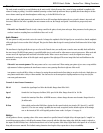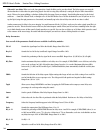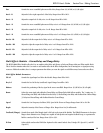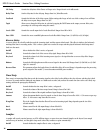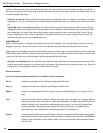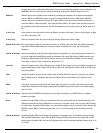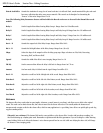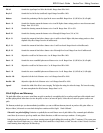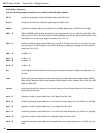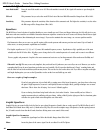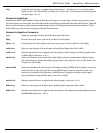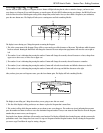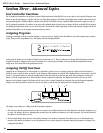
Detuner Parameters
FX: Lvl Controls the signal input level fed to the Module. Ranges from Off to 100%.
Dry: Lvl Controls the level of the dry (uneffected) signal. Ranges from Off to 100%.
Balance Controls the positioning of the dry signal in the stereo soundfield. Ranges from -99 (all left) to 99 (all right).
Dtn A - B Controls the detuning amount for detuner voices A and B. Higher detune settings produce a more dissonant sound.
Ranges from -50% to 50%.
Dtn C - D Controls the detuning amount for detuner voices C and D. Ranges from -50% to 50%.
Dtn E -H Controls the detuning amount for detuner voices E through H. Ranges from -50% to 50%.
Dly A - B Controls the amount of time before detuner voices A and B are heard. Higher delay time settings produce a short
slapback delay effect. Ranges from 0 to 60 milliseconds.
Dly C - D Controls the amount of time before detuner voices C and D are heard. Ranges from 0 to 60 milliseconds.
Dly E - H Controls the amount of time before detuner voices E through H are heard. Ranges from 0 to 60 milliseconds.
Out A - B Adjusts the overall level of detuner voice A or B. Ranges from Off to 100%.
Pan A - B Controls the stereo soundfield placement of detuner voice A or B. Ranges from -99 (all left) to 99 (all right).
Out C - D Adjusts the overall level of detuner voice C or D. Ranges from Off to 100%.
Pan C - D Controls the stereo soundfield placement of detuner voice C or D. Ranges from -99 (all left) to 99 (all right).
Out LA - LB Adjusts the left side level of detuner voice A or B. Ranges from Off to 100%.
Out RA - RB Adjusts the right side level of detuner voice A or B. Ranges from Off to 100%.
Spread Controls the width of the effect’s stereo imaging. The higher the setting, the wider the image. The lower the setting,
the more monophonic the effect becomes. Ranges from 1 to 10.
Pitch Shifters and Harmony
The pitch shifter allows you to move sound from one pitch to another. It accomplishes this by recording a small part of the original sound
and then playing it back either faster (to raise the pitch) or slower (to lower the pitch). It does this over and over again to create a new
pitch.
The Harmony modules give you almost unlimited possibilities. you can use different harmony intervals to produce slide guitar effects. or
Major or Minor 3rd intervals to create dual soloing lines reminiscent of the Eagles’ “Hotel California”.
When do I use pitch shifting? Guitarists are probably the most well known users of pitch shifters. They commonly pitch shift their
sound down by an octave to get a deep rumble out of their distortion, or shift it an octave up to emulate a 12 string guitar.
Both guitar and synth players have created some amazing textures by pitch shifting their sound up a fifth (7 semitones). This creates more
complex chords out of simple ones (e.g. a basic Cmaj chord sounds like a Cmaj9 chord, or Cmin7 becomes a Cmin11 chord). Lead lines
sound amazing when using major 5th intervals up.
41
RP21D User’s Guide Section Two - Editing Functions



